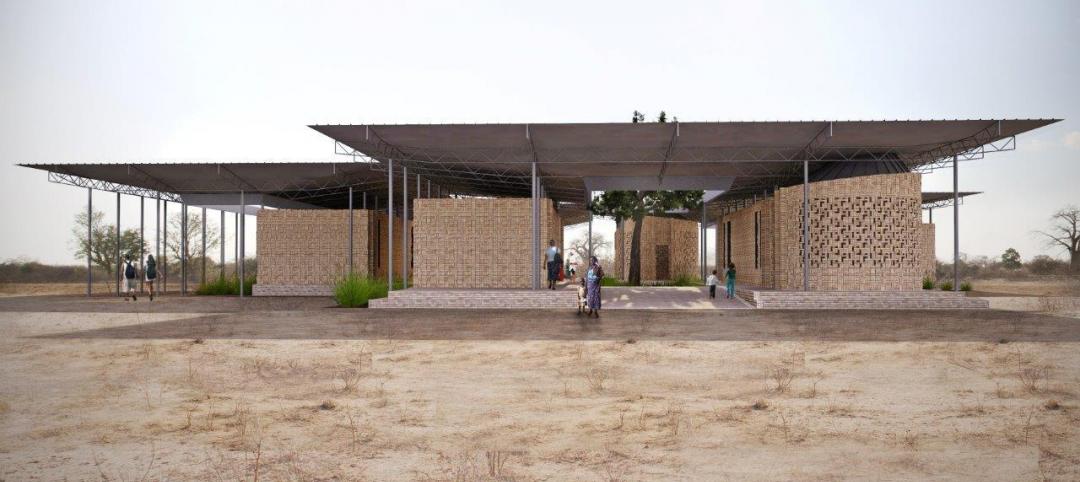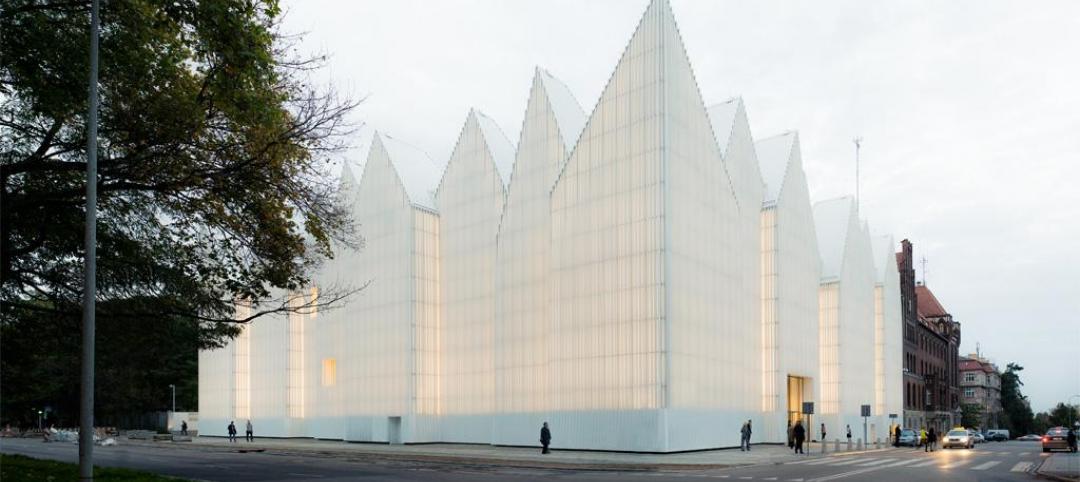The unique relationship between the people of Thailand and elephants dates back at least three centuries. Elephants were used in war and peace, and in rural villages were domesticated to the point where the beasts lived under the same roofs as humans, with their respective lives virtually inextricable.
Deforestation devastated that bond between elephants and the Kui people in northeast Thailand’s Surin Province, depriving both of food and medicinal plants. The province also incurred severe droughts. These events displaced the Kui and elephants to surrounding towns, begging for food or working in elephant camps.
Last month, as part of the government’s “Elephant World” plan that seeks a safe and prosperous reuniting of the Kui and elephants within their homeland, the Surin Provincial Administration Organization completed its Elephant Museum, which sits on a 5,400-sm site and used 480,000 handmade clay bricks in its construction.
Bangkok Project Studio, the museum’s architect, has incorporated handmade bricks for projects before, including the eight-meter-tall walls of the Kantana Film and Animation Institute, which opened in Nakhom Pathom, Thailand, in 2011; and more recently the Elephant Stadium pavilion at Elephant World in Surin, Thailand, completed in 2015.

The complex's curved walls provide visitors with different perspectives, depending on the time of day.
A MESSAGE OF HOPE

Visitors can move freely from one exhibit space to another through entries within the walls.

The Elephant Museum, built by Rattanachart Construction, Ltd., is divided into four sections. The first includes a reception area, exhibition room, library, seminar room, and shops for coffee and gifts. The other three sections feature exhibition spaces that touch on the relationship between the Thai people and elephants; the deforestation that places the elephants’ survival at risk; and a message of empowerment, where visitors can take pride in their culture.

The museum divides into four sections.
More than 200 elephants live in Surin Province, and the museum’s exhibits reiterate its people’s disapproval of animal cruelty and exploitation, while projecting hope for the future.
The museum, which was completed last month, is within a complex of buildings that includes a play area for elephants, a research center, and educational facilities. Visitors can circulate from one space to another through openings in arched walls. Indoor and outdoor areas allow for a variety of programming.

The museum includes a play area for elephants.
Related Stories
Cultural Facilities | Jun 5, 2015
Chicago’s 606 elevated park opens
The 2.7-mile stretch repurposes an abandoned elevated train track that snakes through Humboldt Park and Bucktown.
Cultural Facilities | Jun 2, 2015
Snøhetta and Dialog to revitalize Willamette Falls area in Oregon
As part of the plan, an abandoned paper mill will be repurposed, while landscaping and running trails will be added.
BIM and Information Technology | May 27, 2015
4 projects honored with AIA TAP Innovation Awards for excellence in BIM and project delivery
Morphosis Architects' Emerson College building in Los Angeles and the University of Delaware’s ISE Lab are among the projects honored by AIA for their use of BIM/VDC tools.
Cultural Facilities | May 15, 2015
Design for beekeeping facility in Tanzania by Jaklitsch/Gardner Architects unveiled
The developers say the center will be an important educational and vocational tool.
Cultural Facilities | May 14, 2015
Szczecin Philharmonic Hall wins Mies van der Rohe Award 2015
The hall is composed following a Fibonacci sequence whose fragmentation increases with the distance from the scene.
Cultural Facilities | May 13, 2015
MVRDV selected to design High Line-inspired park in Seoul
The garden will be organized as a library of plants, which will make the park easier to navigate.
Museums | May 13, 2015
The museum of tomorrow: 8 things to know about cultural institutions in today’s society
Entertainment-based experiences, personal journeys, and community engagement are among the key themes that cultural institutions must embrace to stay relevant, write Gensler's Diana Lee and Richard Jacob.
High-rise Construction | May 6, 2015
Parks in the sky? Subterranean bike paths? Meet the livable city, designed in 3D
Today’s great cities must be resilient—and open—to many things, including the influx of humanity, writes Gensler co-CEO Andy Cohen.
Multifamily Housing | Apr 22, 2015
Condo developers covet churches for conversions
Former churches, many of which are sitting on prime urban real estate, are being converted into libraries, restaurants, and with greater frequency condominiums.
Green | Apr 22, 2015
AIA Committee on the Environment recognizes Top 10 Green Projects
Seattle's Bullitt Center and the University Center at The New School are among AIA's top 10 green buildings for 2015.

















